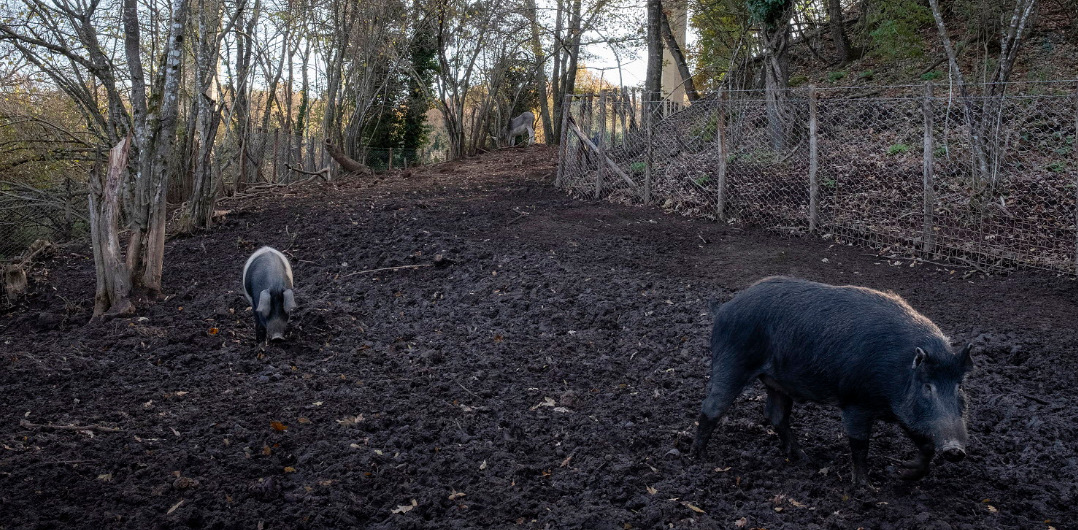Finetuning prevention and early detection of African swine fever

African swine fever, an infectious viral and highly lethal disease that kills pigs and wild boar, first appeared in the Balkans and the Republic of Moldova nearly a decade ago. While not a threat to human health, the virus is a major hazard to pig farms, livelihoods, local economies, and food security.
The Food and Agriculture Organization of the United Nations (FAO) and the European Bank for Reconstruction and Development (EBRD) continue to raise awareness of African swine fever in the region and finetune the capacity of veterinary personnel, commercial and backyard pig farmers, government officials and hunters to detect, prevent, and contain the disease.
Most recently, that work involved a series of African swine fever simulation exercises and trainings in the Republic of Moldova and Serbia, as part of a broader FAO–EBRD regional animal health programme that also covers Bulgaria, Romania, and Ukraine.
As FAO Animal Health Expert Mark Hovari explained, African swine fever is a global transboundary animal disease that affects multiple actors. Although research is ongoing, there is currently no vaccine available for commercial use.
Alongside top experts from other countries, “we were able to clarify misconceptions about the epidemiology of the disease, how it is spread, how it can get into farms and to provide targeted advice,” he said.
“A safe and effective vaccine, when available, will be a game changer, but until then our focus is on improving prevention by enhancing pig farm biosecurity, identifying gaps in knowledge among partners and improving the early response efficiency of veterinary authorities,” Hovari added.
“African swine fever outbreaks can be disastrous for agribusinesses throughout the region, with major economic repercussions, financial losses and a deteriorating investment climate. Therefore, investments in prevention and early detection are critical,” said Vasyl Hovhera, Principal in Agribusiness Advisory at the EBRD.
Knowledge and investments key
The exercises and trainings covered, among other things, how to detect an outbreak and how to properly eliminate the disease from the farm. The latter involves the humane culling of animals, safe disposal of carcasses and infected materials and subsequent cleaning and disinfection of the establishment.
The trainings also addressed the challenges of repopulating a farm following an outbreak, including waiting periods and reintroduction methods.
Better biosecurity on commercial pig farms is key. That includes things like installing adequate fencing around farms and setting up disinfection points and stations for changing clothing and shoes. It also entails the proper handling of animal feed, water and animal by-products and the constant education of the workforce on the correct procedures to follow.
Because African swine fever also affects wild boar, another training zeroed in on control of the disease in wildlife and the importance of wildlife management and good hunting biosecurity practices. While eliminating African swine fever from the wild boar population is difficult, following the advice provided during the training will reduce the risk of the virus spreading from infected wild boars or carcasses to pig farms.
For Oliver Stanković, Director and CEO of Edu Farm in Serbia, which produces high-quality gilts (female pigs that have not yet reproduced) for the local market, knowledge about the nature of the virus and effective biosecurity measures is one of the most valuable tools.
“If you know how African swine fever spreads, you can fight against it,” he said.
Stanković explained that his farm, founded in 2015, already had a high level of biosecurity and is now working with a biosecurity expert to improve some of those measures.
“But many of the farms in our country are older,” he said. “I think some owners did not realize what they needed to invest in to make their farms safe.”
If anything, African swine fever has taught the global community that fighting a serious transboundary disease calls for collaboration and unity. The high level of attendance at the simulation exercises and trainings and discussions among veterinarians, farmers, hunters, and policymakers are encouraging signs.
